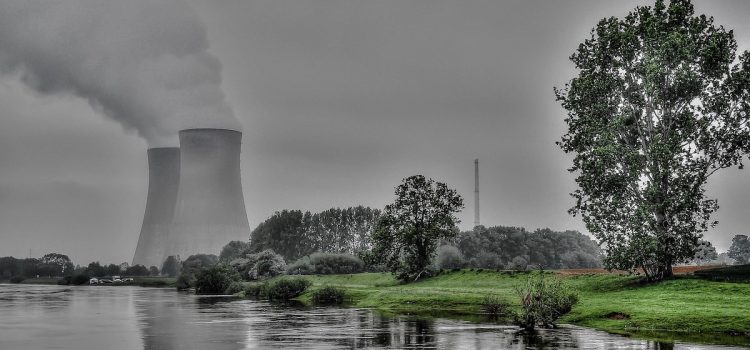

This article is an excerpt from the Shortform book guide to "How the World Really Works" by Vaclav Smil. Shortform has the world's best summaries and analyses of books you should be reading.
Like this article? Sign up for a free trial here.
What’s the fastest way to reduce carbon emissions from energy use? Which causes more deaths—fossil fuels or nuclear power?
Vaclav Smil argues that we need to reduce energy use in all areas—transportation, buildings, agriculture, and industry—in order to cut down on carbon emissions. Two primary ways to do so are by generating electricity from renewable sources and by using nuclear energy.
Keep reading to understand Smil’s ideas on how to reduce carbon emissions in energy use and manufacturing.
Generate Electricity Without Relying on Fossil Fuel
Smil’s first piece of advice for how to reduce carbon emissions is to generate electricity without relying on fossil fuels. It’s the fastest way to do it because solar and wind-powered electricity is now cheaper than other forms. Countries like Germany now generate 40% of their electricity from renewable sources.
However, Smil says there are many obstacles to this approach. One challenge is constructing high-voltage lines to move renewable electricity from the place where it’s generated (such as the Great Plains for wind energy and the Southwestern US for solar) to all the places it’s needed. Another is the need for very large storage facilities for electricity. The options currently available, such as batteries and supercapacitors, aren’t big enough to serve large cities. Finally, electricity alone is not sufficient to produce steel, plastics, cement, and ammonia.
(Shortform note: Many experts agree with Smil that generating electricity using renewables is a good place to start when it comes to decarbonizing the energy system. And Germany isn’t the only success story: Despite the challenges, countries around the world are generating more and more of their electricity using renewables. Costa Rica, Scotland, Iceland, Uruguay, and Norway generate almost 100% of their electricity using renewable energy sources. China, the world’s largest carbon emitter, is also the world leader in wind and solar energy production.)
Using Nuclear Energy
Nuclear energy is another solution to cutting down on carbon emissions. People perceive the risk of living near a nuclear power plant as high in part because they have no control over the risk of an accident (as opposed to voluntary risks such as driving a car). However, Smil says that burning fossil fuels causes far more deaths from air pollution than nuclear reactors cause. He explains that even when fatalities from Chernobyl and Fukushima are included, nuclear electricity generation is far safer than generating electricity from fossil fuels.
(Shortform note: In How to Avoid a Climate Disaster, Bill Gates argues that our best chance of achieving noncarbon electricity generation is by combining renewables with nuclear power. He notes that in addition to nuclear power’s reliability, nuclear reactors are less materials-intensive to build and they run on uranium, a noncarbon and relatively abundant fuel source. Gates also says that new technology promises to make nuclear meltdowns a near impossibility. Michael Shellenberger, the author of Apocalypse Never, agrees, pointing out that the anti-nuclear movement has contributed to the public’s misperception of nuclear risk by lumping nuclear energy and nuclear weapons together, despite the lack of correlation between the two.)
Other Ways to Cut Down on Carbon Emissions From Energy Use
Smil points to a variety of other ways to reduce carbon emissions. For example, he says homes should be required to be well-insulated to keep in heat and reduce carbon emissions. And people shouldn’t drive SUVs—any emissions gains resulting from electric cars have been erased many times over by SUVs.
(Shortform note: Insulating homes and switching to electric vehicles are two examples of energy efficiency, which has contributed more to US energy needs in the past 40 years than oil, coal, gas, or nuclear power. As technological advances make energy more efficient, we don’t need to use as much of it, which in turn cuts down on our carbon emissions. For example, internal combustion engines only convert about 12-30% of fuel to energy, whereas modern hybrid and electric vehicles have a fuel efficiency rating of about 77%. In addition to addressing climate change, energy efficiency can help reduce energy costs for consumers and improve businesses’ competitiveness.)
| Policy, Legal, and Financial Solutions to Climate Change While Smil lists a variety of technological and even psychological obstacles to decreasing humanity’s reliance on fossil fuels, other experts point out that many of these challenges could be overcome if governments did more to prioritize clean energy and emissions reduction. These experts argue that by putting in place laws and policies that incentivize greater development of clean energy and provide financial support for building the necessary infrastructure, governments could encourage (or require) businesses and individuals to switch from fossil fuels to clean energy. Many countries already have such laws in place. For example, in the US, the 2022 Inflation Reduction Act created tax credits for everything from electric vehicles to carbon capture and sequestration—an investment of about $370 billion over ten years. Finland was the first country to institute a carbon tax, in 1990, and has since required that sustainable materials be used in new building construction. Luxembourg passed legislation apportioning $30.5 million euros toward building new electric vehicle charging stations. Many other countries, as well as state and local governments, have instituted laws and policies requiring everything from energy-efficient buildings to sustainable agriculture practices and the preservation of old-growth forests. Just as countries need to increase support for clean energy, experts say governments also need to decrease support for fossil fuels. Many governments still subsidize fossil fuels: Globally, fossil fuel subsidies increased by 11% between 2016 and 2017. In 2018, total worldwide investment in clean energy was less than investment in fossil fuel subsidies. And, from 2021 to 2022, fossil fuel subsidies doubled amidst the global energy crisis triggered by Russia’s invasion of Ukraine. |
Reducing Carbon Emissions in Manufacturing
Smil says it’s unlikely that the ammonia, plastics, concrete, and steel industries will stop relying on fossil fuels anytime soon. And developing countries will need to increase their production of these materials many times over to catch up with wealthier countries. What’s more, “green” electricity, such as that generated by wind turbines and electric car batteries, relies on all of these materials and many others as well.
Nonetheless, Smil says there may be some steps we can take to cut down on the use of these materials. For example, we could use less ammonia by relying on some of the same methods as with food production: increasing food prices or eating less meat. Alternatively, we could get wealthy countries to produce less food.
(Shortform note: While Smil contends that the only way to reduce carbon emissions from these materials is to use fewer of them, many manufacturers are already implementing methods to cut down on emissions without reducing their use of these materials, as discussed in the commentary above. One such method is to create new manufacturing processes that reduce raw materials or decrease machine use. For example, one steel manufacturer removed rollers and streamlined its production process, allowing it to use smaller facilities and consume less energy and heat. This resulted in an 80-90% reduction in carbon emissions. And many building projects reduce emissions by using recycled, reclaimed, or carbon-storing materials, such as wood or hemp.)

———End of Preview———
Like what you just read? Read the rest of the world's best book summary and analysis of Vaclav Smil's "How the World Really Works" at Shortform.
Here's what you'll find in our full How the World Really Works summary:
- How modern-day life relies heavily on fossil fuels for nearly everything
- Why liberals and conservatives need to better understand how the world works
- Why it's nearly impossible to meet current IPCC limits on global warming






